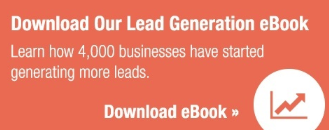Blogging has become a vital component of inbound marketing strategies for financial institutions of all types. Companies that blog have 55% more website visitors than those that don’t. 
The information being shared should provide insights to the processes your organization uses in their planning and decision-making. Blogging also serves as an educational tool for your customers that adds value to the relationship and marks your financial institution as a trusted source.
The most successful financial blogs share some characteristics that your bank or financial institution should strive to match, including:
- Original content—While almost anyone can pick up the latest copy of the Wall Street Journal to learn how the world is responding to the debt crisis in Europe, it takes research and ingenuity to deconstruct the numerous forces that are shaping each financial event. Most importantly, financial blog readers want to know how to react to these events. Readers love to follow a writer who is correct in their predictions; this kind of loyalty buoys readership and the reputation of a financial institution.
- Clear writing—The hard facts are what most readers are seeking, but a blog that is dry, verbose or poorly written will limit readership. It is often wise to take a page from the newspapers where space is at a premium. Introduce the key news concepts at the beginning in crisp, clear prose. Then fill in the details, analytical methods and supporting facts later in the column. Few blogs have editorial staff to ensure perfection, but it is important that the level of writing meet the minimum standards of most financial professionals, which is at least collegiate level. That being said, blog content should be easily digestible.
- Post regularly—Even if your key analysts do not have flashes of insight on a weekly basis, you should still be posting regularly. Your readers are willing to accept blog posts that don’t always provide ingenious interpretations of the latest events on Wall Street, as long as you demonstrate dialogue with readers is a priority. Even if you must write up more bland topics like customer service or new financial products at your bank, providing fresh updates keeps your customers engaged. Those who blogged at least 20 times per month had 5 times more traffic than those who blogged less than 4 times per month. For more blogging stats, check out our lead generation eBook:
- Attractive format—Even financial professionals eager to learn the secret to fabulous wealth are unwilling to wade through a wall of text, so use tricks that the most successful bloggers capitalize on. Use lists and bulleted information to draw the eye to the most important facts. Insert useful or appealing videos and images to add value to the post. While the borders and backgrounds are not overly important, choosing visual themes that properly complement your topic is often helpful.
- Provoke responses—Readers are attracted to blogs that generate responses. Although the conversations with readers should be generally positive, it is not altogether bad to invite criticism. No one is constantly right, especially financial blog writers, but a reasoned approach explaining why you were wrong can be as effective as a blanket denial of failure. Leaving your readers with a thoughtful question or issue to ponder can invite your readers to engage you, which should spur others.
A financial blog should be one of the most important components of your financial institution’s inbound marketing strategy. With proper management, your financial blog can elevate your organization’s reputation and help attract the customers you most desire.





